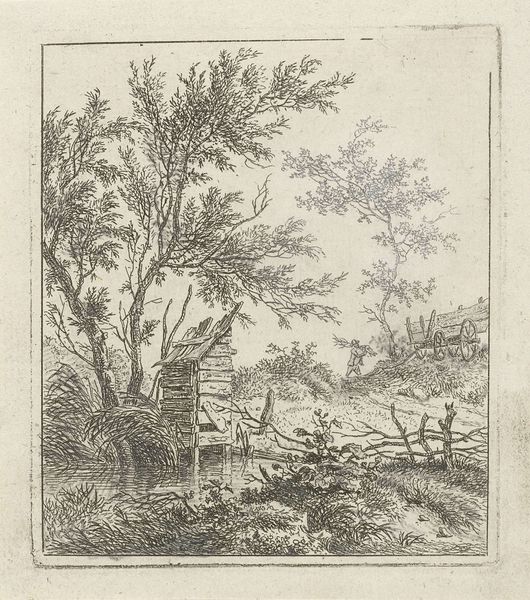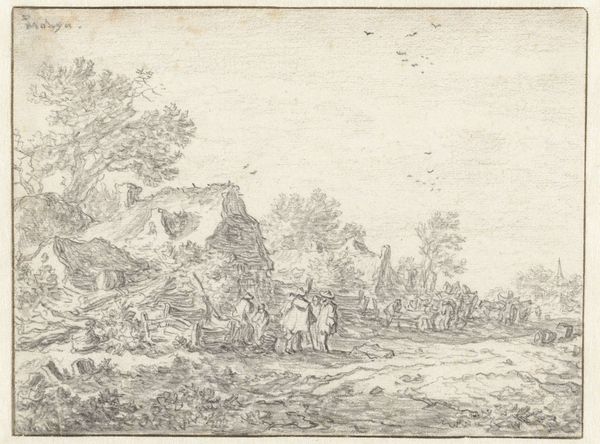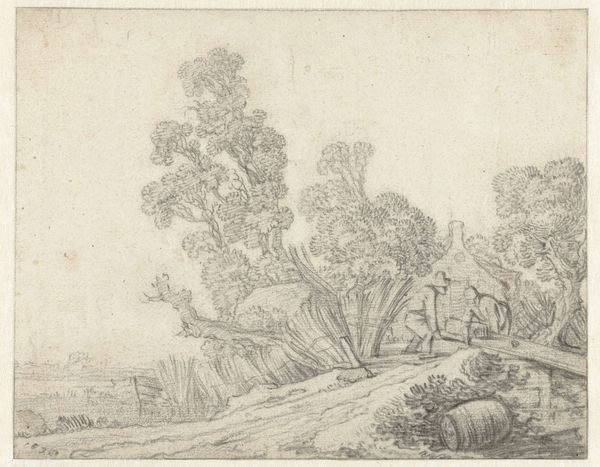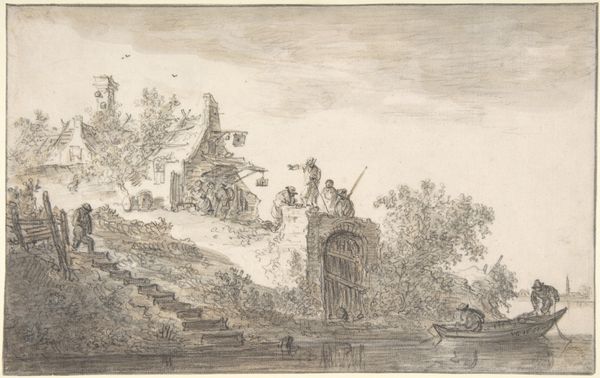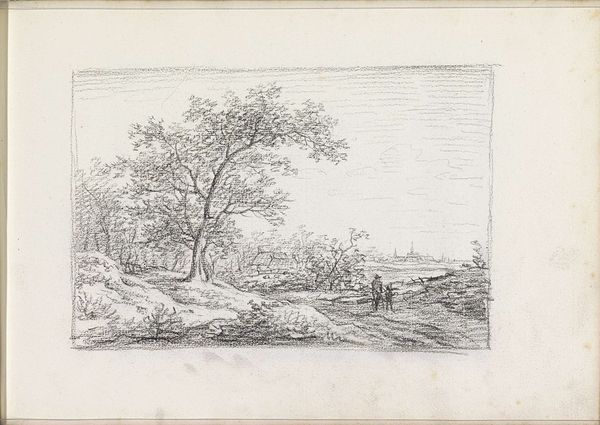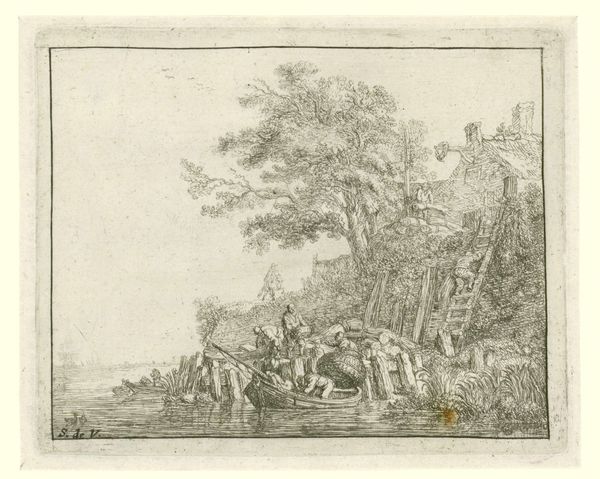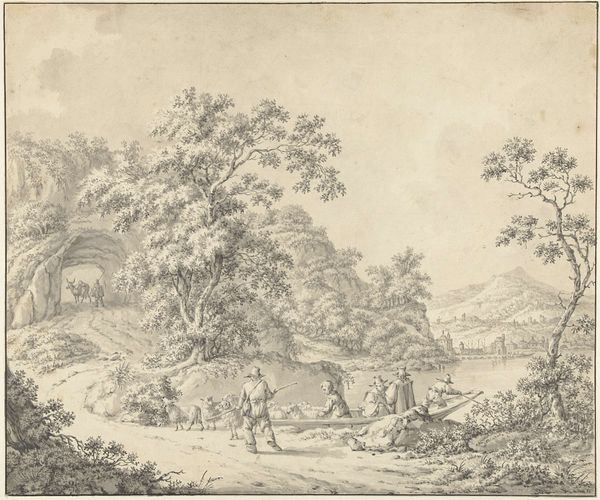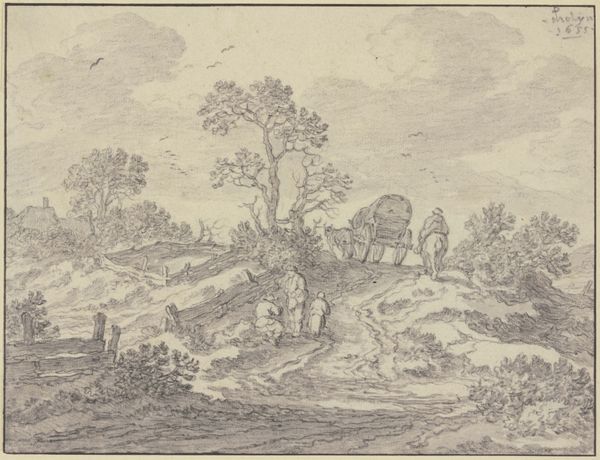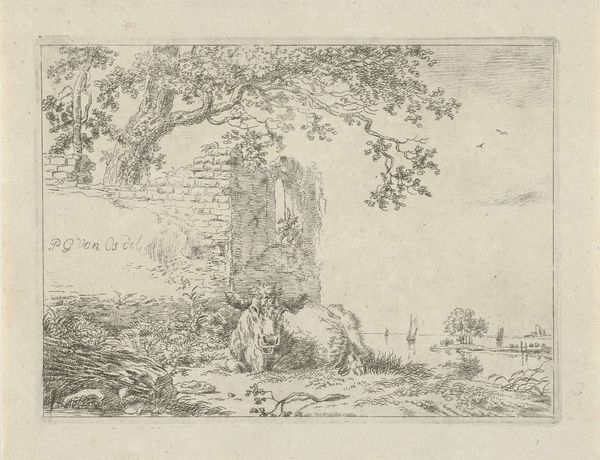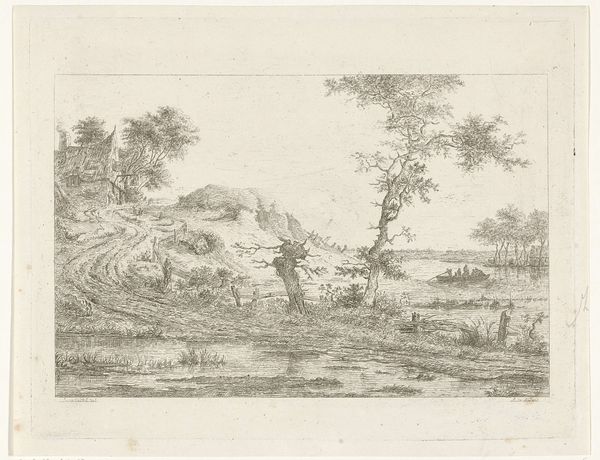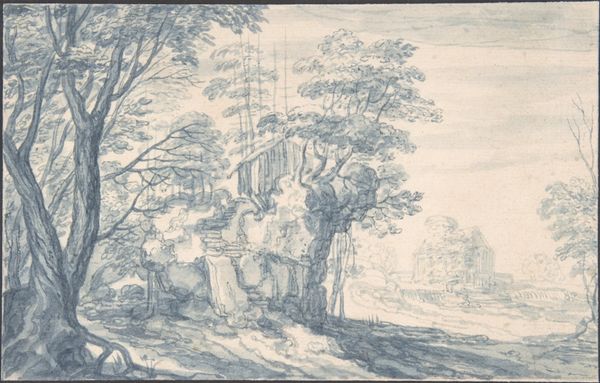
drawing, ink
#
drawing
#
light pencil work
#
pen drawing
#
dutch-golden-age
#
pen illustration
#
pen sketch
#
landscape
#
personal sketchbook
#
ink
#
ink drawing experimentation
#
pen-ink sketch
#
line
#
pen work
#
sketchbook drawing
#
genre-painting
#
sketchbook art
#
realism
Dimensions: height 150 mm, width 200 mm
Copyright: Rijks Museum: Open Domain
Editor: This pen and ink drawing, “Landschap met een boer en boerin” or "Landscape with a Farmer and Wife" by Pieter de Molijn, dates from 1626-1833. It feels like a quiet observation of rural life, yet the dilapidated structures add a melancholic mood to it. How do you read this piece? Curator: That's a great initial read. Considering Molijn’s work in the context of the Dutch Golden Age, particularly its burgeoning middle class, we can see how landscape art becomes a way to articulate identity and ownership. What might the depiction of this particular couple, within this setting of apparent decay, be communicating about rural life at the time? Editor: I hadn't thought of it like that. Perhaps it's a commentary on the realities of rural life, even during a period of overall prosperity? A suggestion that not everyone was benefiting equally? Curator: Exactly. The seemingly simple depiction of the farmer and his wife actually touches upon a complex interplay of social and economic forces. Look at their clothing, their postures. Are they idealized, or do they seem grounded in the reality of hard labor? What is Molijn trying to say about their relationship to the land itself? Editor: I see what you mean. They're not romanticized. It’s a more grounded depiction. So, it moves beyond just being a pleasant landscape to having a social narrative? Curator: Precisely. And think about whose perspective is centered in the image? Is it the landowners or the workers? Who is controlling the means of production and who does that affect the most? Thinking about art in that way brings new possibilities. Editor: I will certainly view landscape art with a different lens from now on. Thanks. Curator: And I now appreciate the need to explore class more explicitly when analyzing these scenes.
Comments
No comments
Be the first to comment and join the conversation on the ultimate creative platform.
